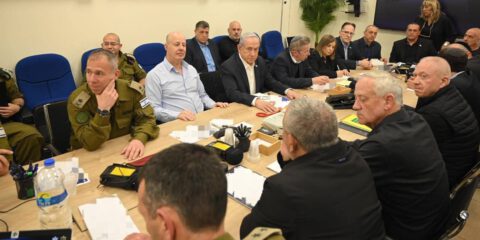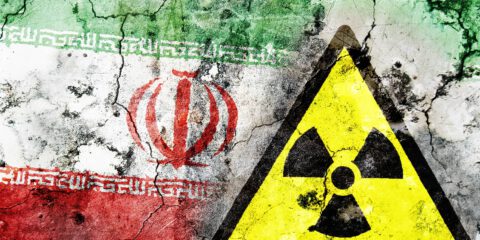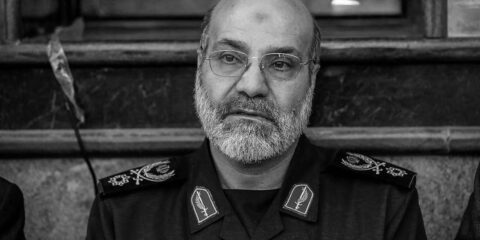The American-British-French strike in Syria should be seen as an exercise in building Western deterrence and creditability in advance of the decision expected next month regarding the nuclear deal with Iran.
President Trump has established an idiosyncratic style of communication (“Get ready, Russia”…) that all too often makes it difficult to take him seriously. His unbridled outbursts, in blunt and sometimes ungrammatical English, are indeed, at times, a momentary expression of the latest media stimulus he had been exposed to.
Nevertheless, it would be a mistake to interpret the April 14 strike in Syria strictly in terms of a gut reaction to the gassing horrors graphically depicted on news channels. For the president and the senior circle around him – Vice President Pence, the current DCI and soon-to-be Secretary of State Pompeo, Secretary of Defense Mattis, and specifically National Security Adviser John Bolton (who had just been sworn in and brings with him a well-defined perspective on these matters) – the action taken in Syria is embedded in a much broader framework. It should be viewed, from their angle, as a central event in the sequence that leads to the important decision on Iran expected next month.
What matters, in this context, is not the Douma chemical attack itself (which has yet to be fully investigated) nor the nature of the military response – limited and measured – chosen by the US, Britain and France. The importance of what happened is in the re-establishment of a credible military threat – a concept without which much could go wrong, in the region and beyond it. (This includes the North Korean challenge).
In his day, President Obama belittled this aspect of policy – “credibility is overrated” he said in the aftermath of his decision not to strike in Syria in 2013, much to the dismay of traditional allies of the US for whom the credibility of the American commitment had been vital. Trump has been eager to be perceived as correcting his predecessor’s failures, as well as to demonstrate, if need be by the use of force, that his warnings should not be trifled with.
This may have much more consequential implications in four weeks time – if (or rather, when) Trump decides to “nix” the US commitment to the JCPOA. By May 12, he may reinstate US sanctions nuclear sanctions on Iran.
Iran’s response might take several forms. They may seek to stir up trouble across the region through propaganda, political action and provocations by proxy. To some extent, the Palestinian Islamic Jihad, which serves Iran, already is doing so in Gaza. Iran may use its own capacities (as they tried to do on February 10) or those of their key agents and proxies like Hizbullah to launch punitive terror attacks, as they are already threatening to do in response to the attack on their officers at the T-4 airbase in Syria. At the same time, they are likely to declare their intention to resume enrichment and to advance rapidly towards the “breakout point” in which they will have enough fissile material for a nuclear device. In the face of all these challenges, the US will need to posit – among other tools – a credible military threat as a deterrent and a restraining factor.
The credibility of the US threat would then depend on two aspects that were put to a test (of sorts) in Syria. In technical terms, there needs to be, and apparently there is, a proven capacity to overcome sophisticated air defense and counter-EW (electronic warfare) systems, some of them Russian made.
At the political leadership level, there needs to be a clear willingness to act without being deterred by wild threats, by Iran and her proxies, to lash out against Western (and Israeli) targets. In both respects, Trump’s decision to take action – albeit a short and highly circumscribed burst of action, well defined in advance – needs to be read also as a message to Iran. It is in essence close to the message delivered by Netanyahu in his Holocaust Memorial Day speech at Yad Vashem: Do not put our patience to a test.
Of equally great importance – in the same context – was the participation of Britain and France in the strike on Syrian targets (– unlike the 2017 strike, when Trump acted alone). It should not (yet) be read as an indication that the two leaders, May of the UK and Macron of France, are now on the same page with the Trump team on the broader Iran issue. But the very fact that they were willing to commit to a US-led attack is telling.
France has been hostile to Assad and his regime ever since the assassination of Rafiq Hariri in Lebanon. More recently its has been willing to close ranks with the US (this time to the left of Trump, rather than to the right of Obama…) and once again, as in 2015, took up a relatively firm stand against Iran. This stance, which may soon become more significant for the regional and global balance, may also be the product of concern for France’s very extensive business interests in the Gulf states; all of whom (Saudi Arabia, the UAE and Qatar alike) offered support for the strike on Syria.
It should thus come as no surprise that a well known Lebanese journalist (whose screed has been translated and provided by MEMRI), ‘Abdallah Amin, who is identified with Hizbullah and with the Iranian and Syrian regime perspectives, went after France, teeth first, two days before the attack, in a vicious attempt to deter Macron. “France is besmirched with Arab blood,” he wrote. “She acts like the town punk, who hides behind the local thug – the US – but pisses in his pants from fear; and she should recall the body parts of her soldiers torn to bits in Lebanon [in 1983].”
The intensity of the message and its ugliness probably indicate some worry and dismay among the “Camp of Resistance” (Iran and her proxies) in the face of what they see as a hardening French stand. They may have hoped, with such tactics, to scare the French and turn them into the weak link in the American line-up. Their failure to have this effect – and the broad support across the West for the use of force in this case, is in itself another important signal on the eve of major events in May 2018.
JISS Policy Papers are published through the generosity of the Greg Rosshandler Family.
photo: By Kyle Soard (Defense Video Imagery Distribution System) [Public domain], via Wikimedia Commons









 - בניית אתרים
- בניית אתרים